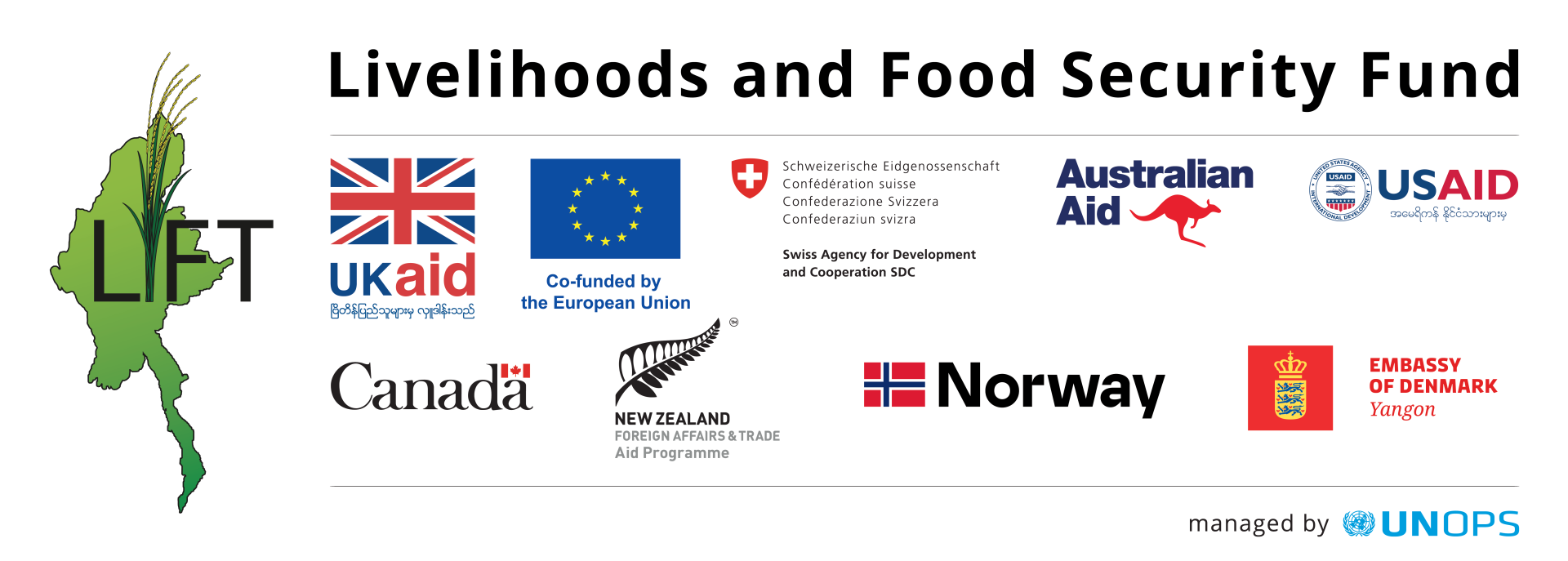Original Article Available at :
The Livelihoods and Food Security Trust Fund was set up as a multi donor trust fund to support Myanmar to work towards the eradication of extreme poverty and hunger, one of the Millennium Development Goals.
Myanmar is still one of the poorest countries in South-East Asia. According to a recent country-wide survey 26 percent of Myanmar’s population lives below the poverty line. The average proportion of total household budget spent on food is 68 percent.
Agriculture remains the mainstay of the economy with almost 63 percent of the labour force engaged in farming. However, nearly a quarter of farmers have no access to land of their own for cultivation.
The Livelihoods and Food Security Trust Fund (LIFT) was set up as a multi donor trust fund to support Myanmar to work towards the eradication of extreme poverty and hunger, one of the Millennium Development Goals.
Programme details
Donors have planned a comprehensive programmatic approach to strengthen dialogue, maximize impact, encourage long-term action and avoid duplication and fragmentation. Donors include the governments of Australia, Denmark, the Netherlands, New Zealand, Sweden, Switzerland and the United Kingdom, and the European Union.
UNOPS is engaged as LIFT’s fund manager to administer the funds and provide monitoring and oversight. The measurement of impacts and dissemination of action-focused research are a priority for the fund.
Increasing agricultural production
Through a network of implementing partners, LIFT activities focus on sustainably increasing food availability and income for two million beneficiaries. LIFT’s target beneficiaries include smallholder farmers and those without land (25-60 percent of the population, depending on the region).
Important achievements include:
- More than 50,000 farmers were provided with over 2,200 metric tons of paddy seed and 1,200 metric tons of fertilizer
- Almost 30,000 farmers were provided with training and advice to maximize the benefit of agricultural inputs
- Almost 18,000 poor and landless households received livestock in 2011
- Over 3,700 community-based groups, with more than 70,000 members, have been trained in management, livelihood and vocational skills
- LIFT microfinance activities currently cover more than 3,000 villages, providing services to over 50,000 poor and vulnerable households. The majority of these loans go to women, including agricultural loans (around 60 percent)
Developing local economies through LIFT’s microfinance programme
Thamein Htaw Theingone is a quiet village with a population of 200 people in the Ayeyarwady Delta. In May 2008, the village was hit by Cyclone Nargis. Villagers are now rebuilding their lives and livelihoods through the provision of rural credit support provided by LIFT.
Daw Than Htay, one of the programme’s beneficiaries said: “I learned to make clothes by watching tailors design, cut cloth and stitch. Although I could stitch I could not sell the clothes as I did not have a sewing machine.”
Daw Than Htay received a cash grant of $135 from the LIFT-funded Pact Myanmar and bought herself a sewing machine. She now earns more than USD 2.50 daily. Daw Than Htay later joined another LIFT-funded Pact programme and took out a $62.50 loan to buy her husband a trishaw. Her husband was able to leave his dangerous job in the offshore fisheries industry and earn enough to repay the loan. “My husband earns at least $2.50 a day and we can repay the loan installment easily,” Daw Than Htay said.
With the extra money she has been able to send her children to school and repair her house that had been destroyed by the cyclone. Daw Than Htay is confident of expanding her business with additional training. She said, “There are so many business opportunities in our village. I am now confident that I can manage micro enterprises very well.”
Achieving UNOPS contribution goals
During 2010-2013, four high level goals are defining the work of UNOPS. They are called ‘contribution goals’, since UNOPS contributes to the work and results of its partners. LIFT is working towards the third contribution goal: The ability of people to develop local economies and obtain social services.


